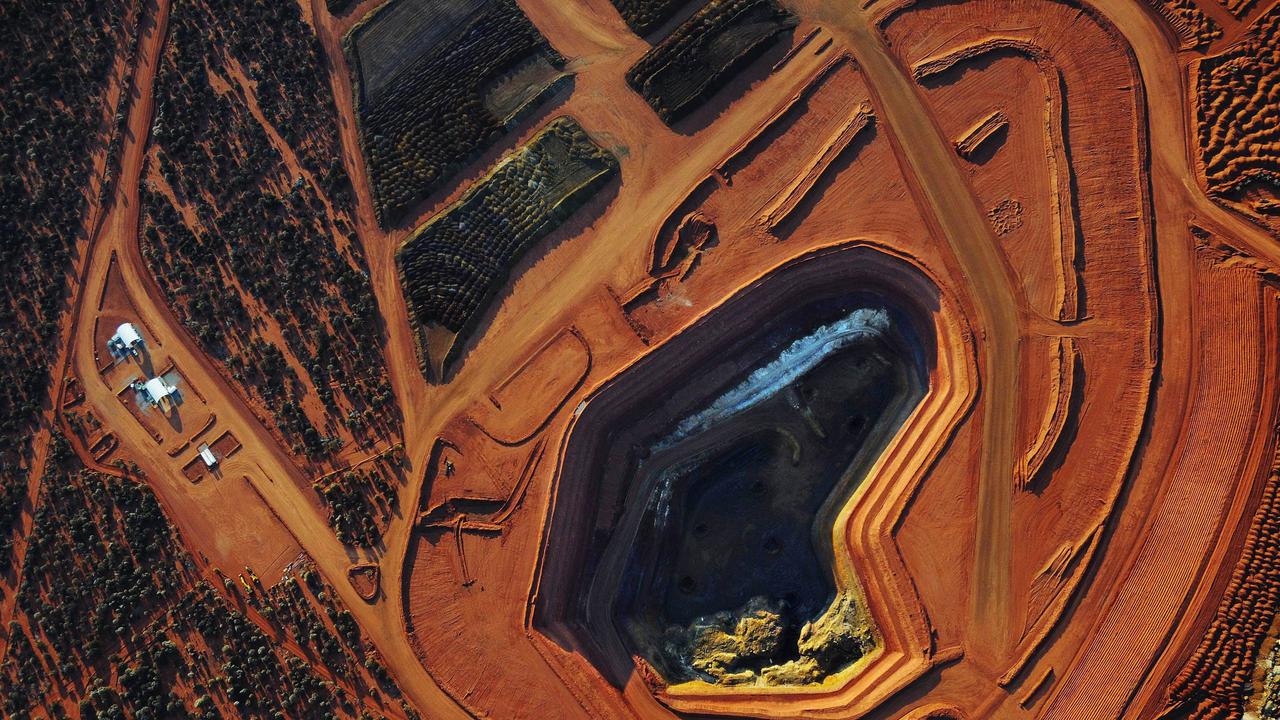NAB panics in face of pressure as Andrew Thorburn, Ken Henry exit
Yesterday’s extraordinary action at NAB begs the question: what more does the bank know about leadership team?

The question left open by yesterday’s extraordinary action at NAB is just what more does the bank know about its leadership team, because surely respected corporate leadership would not change based on a couple of opinionated paragraphs in the final royal commission report.
It is clear the board panicked in the face of pressure.
Both Andrew Thorburn and Ken Henry have served the bank with distinction for several years and have been dumped on the basis of three paragraphs in the royal commission’s final report.
Kenneth Hayne must wonder at the power he possessed when penning those words, singling out two individuals in a lengthy tome covering a litany of misdemeanours by an entire industry.
That is why there must be more to it than was presented.
NAB now follows AMP in being a financial services giant that has changed its top two roles on the back of the royal commission.
Those who have dismissed the report as a non-event will now see a new reality.
Henry had vowed to stay on to prove Hayne wrong, but the market pressure on the NAB chairman would only have intensified when he pushed his chief executive under a bus.
He, too, had known blunders given the record vote in December against his remuneration report which, contrary to his finely worded statements, showed little respect for the changes expected by the community in bank pay.
Still, what is truly extraordinary is how the market pressure leading to this action has built in a matter of days in the wake of the damning words from Hayne.
The market has turned on a dime.
Thorburn has served as NAB chief for four years and is widely respected, liked and supported in the market and, while that doesn’t necessarily make him a good leader, it does stand in stark contrast to the manner of yesterday’s swift dismissal.
The same fund managers who have backed him to date have turned on a dime because of a few paragraphs written by lawyers with little experience in banking.
On Tuesday the bank was rejecting Hayne’s assessment, maintaining it was proceeding at pace to reform its culture, a claim rejected by Hayne.
But there were already questions over Thorburn’s tenure given reports about former staffer Rosemary Rogers and reported theft from the bank and judgment calls such as the ill-fated long service leave due this month.
Thorburn cancelled that on Wednesday, but he will now get an enforced break.
Henry and the board had agreed to the unheard-of chief executive long service leave and made clear they expected him to return at least until Hayne’s report landed.
The concept of a staggered departure for continuity purposes in reality is a nonsense — what matters more is change happens quickly, and likely long-term NAB chairman Phil Chronican and new chief executive Mike Baird or perhaps Medibank’s Craig Drummond get moving quickly.
Heat builds on AGL
AGL boss Brett Redman’s solid profit result yesterday was tarnished by news that staff morale at the company continues to fall amid increased costs to keep its ageing coal plants.
Other energy companies are reporting the same plight, sparked in part by the fact the sector ranks second only to the banks in being political footballs.
Hopes for a potential $1 billion buyback were also dashed, which, combined with an absence of any significant news and accompanying marketing pitch, explains the fall in the company stock price yesterday.
The market would also be concerned at the fact cash conversion levels are falling from 92 per cent to 76 per cent, leaving net cash at $879 million, down from $998m.
Maintenance capital expenditure on the coal plants is forecast to increase from $369m to $373m, with $217m spent to ensure summer reliability. This is 36 per cent of total CAPEX and, given some 83 per cent of AGL’s electricity is coal-fired, these costs can only go higher.
AGL is an integrated producer, which means while electricity prices are high it makes big bucks at the wholesale level, and last half was no exception — up 9 per cent to $1.1bn.
Good news for AGL, less good for its customers and perhaps also for its hedge contracts.
The good news is customer complaints are falling, running at just one third of 2015 financial-year levels, and AGL’s share of total complaints has fallen from 29 per cent to 23 per cent.
Customer churn levels continue to climb, but again AGL is below the market average.
Extraordinarily, just 5 per cent of electricity customers are on standard contracts, with 6 per cent getting loyalty discounts and a stunning 89 per cent on so-called market offers.
In an age where the business schools are preaching simplicity, the banks and energy customers have mastered the art of complexity in dealing with customers.
Turning up to work each day reading how you are ripping off consumers and being kicked in the head by the prime minister isn’t exactly a good start to the day.
This is compounded by internal changes at the company, which means job security has plummeted.
The combination is becoming an important issue to manage because, clearly, having staff who are not motivated is not exactly the best way to grow companies.
This explains why EnergyAustralia’s Catherine Tanna went to the trouble of explaining to staff after last month’s blackouts in Victoria just what happened and how EA reacted to the heatwave.
Staff want to know what is going on and to feel they are involved in decision-making.
Origin’s Frank Calabria clearly has done this well because last reporting season he reported a strong uptick in staff engagement.
It’s one of the metrics that is often glossed over on reporting days, when focus falls on revenue growth and returns on equity.
But AGL’s Redman is putting a real focus on talking with staff more and making sure their views are heard.
He has moved into the top job after the departure of whirlwind change agent Andy Vesey, who might not have focused a lot on what people down the line thought on a particular issue.
There are also sectoral issues, coal-fired power stations and environmental impacts, which pose a challenge for staff morale.
Rates call lifts Mirvac
RBA chief Phillip Lowe’s call to flag a potential interest rate cut has buoyed property stocks, led by Mirvac, which closed yesterday at a post-GFC high of $2.54 a share on bullish forecasts.
Expectations for the sector were weak heading into the earnings season with just 1 per cent increases in earnings expected, but a combination of a neutral stance from the RBA and a strong outlook from boss Susan Lloyd-Hurwitz helped Mirvac’s stock price up 3.3 per cent.
The property company reported a 26 per cent increase in operating profit to $290m.
With the slump in Melbourne and Sydney house prices expected to hurt Mirvac, Lloyd-Hurwitz proved the market wrong.
The market reaction is based on interest rate movements but the fundamental concern should be a slowing economy, which is what prompted the RBA’s change in stance.





To join the conversation, please log in. Don't have an account? Register
Join the conversation, you are commenting as Logout